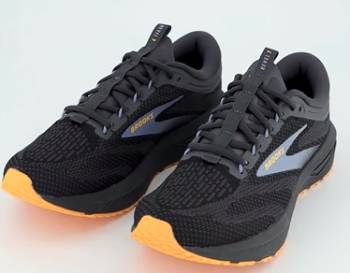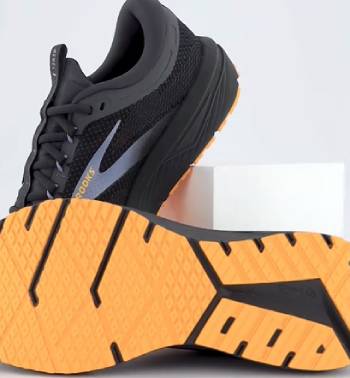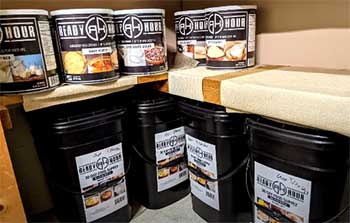As a runner who’s laced up countless pairs of shoes, I’ve always been curious about how two models from the same brand can feel so different on the road. In this article, I’m comparing the Brooks Revel and Brooks Launch, two neutral running shoes that promise comfort and performance at a budget-friendly price.
My goal is to break down their key features, weigh their pros and cons, and help you decide which shoe fits your running style. I’ll cover everything from cushioning to durability, ensuring you get a clear picture to make an informed choice.
A Brief Comparison Table
| Feature | Brooks Revel | Brooks Launch |
| Weight | Men: 8.8 oz, Women: 8.0 oz | Men: 8.2 oz, Women: 7.1 oz |
| Heel-to-Toe Drop | 8 mm | 10 mm |
| Cushioning | BioMoGo DNA (soft, responsive) | BioMoGo DNA (slightly firmer) |
| Outsole | Blown rubber, less aggressive grooves | Blown rubber with arrow-shaped ridges |
| Upper | Fit Knit, intricate patterns, breathable | Engineered mesh, simpler design |
| Price | $100 | $110 |
| Best For | Daily runs, gym, casual wear | Speedwork, daily training, faster paces |
| Sustainability | Standard materials | 31% recycled materials, eco-friendly |
| Durability | Good for short runs, less for high mileage | Better for moderate distances, durable |
| Reflectivity | Lacks reflective elements | Limited reflectivity |
| Fit | Medium width, roomy toe box | Medium/wide options, slightly snugger |
My Journey With Brooks Running Shoes
I’ve been running for years, and Brooks has always been a brand I trust for its focus on runner comfort. The Revel and Launch caught my attention because they’re both neutral running shoes, affordable, and designed for daily training.
But after testing them on pavement, trails, and even the treadmill, I realized they cater to slightly different needs. The Revel feels like a versatile, all-purpose shoe, while the Launch leans toward speed and responsiveness.
Let’s break down what makes each shoe tick, starting with their core features.
Key Features of The Brooks Revel
The Brooks Revel, particularly the Revel 7, is a budget-friendly neutral trainer that doesn’t skimp on quality. Here’s what I noticed after logging miles in it:

- Cushioning: The Revel uses BioMoGo DNA foam, which feels soft yet responsive underfoot. It’s not as plush as premium models like the Ghost, but it strikes a balance that works for daily runs. I found it comfortable for 3-5 mile jogs, though it felt less cushioned on longer runs.
- Upper Design: The Fit Knit upper is a standout. It’s breathable, with intricate patterns that add a stylish flair. The material hugs the foot securely without feeling restrictive, and the roomy toe box gave my toes plenty of wiggle room.
- Outsole: The blown rubber outsole provides decent traction, but the grooves aren’t as aggressive as the Launch’s. It performs well on pavement and light trails but can feel slippery on wet surfaces.
- Weight: At 8.8 ounces for men and 8.0 ounces for women, it’s not the lightest shoe, but it feels lighter than its actual weight, which I appreciated during casual runs.
- Durability: The Revel holds up well for short to moderate runs, but I noticed some wear on the outsole after about 100 miles, suggesting it’s not ideal for high-mileage runners.
One thing I loved about the Revel is its versatility. I wore it for gym sessions, casual walks, and short runs, and it handled all three with ease. However, its lack of reflective elements was a drawback for evening runs, especially in darker conditions.
Pros And Cons of The Brooks Revel
Let’s get real about what the Revel does well and where it falls short.
Pros
- Affordability: At $100, it’s one of the best value-for-money shoes in Brooks’ lineup. You get solid performance without breaking the bank.
- Versatility: Whether I was running, hitting the gym, or walking around town, the Revel felt at home. Its stylish design also makes it a great casual shoe.
- Comfortable Fit: The Fit Knit upper and roomy toe box made it feel like a slipper, even on longer runs.
- Responsive Cushioning: The BioMoGo DNA foam provides a soft yet springy ride, perfect for short to moderate distances.
- Breathability: The knit upper kept my feet cool, even on warm days.
Cons
- Limited Durability: After about 100 miles, I noticed wear on the outsole, making it less ideal for runners logging high weekly mileage.
- No Reflectivity: Running at dusk was nerve-wracking due to the lack of reflective elements, a safety concern for low-light conditions.
- Not for Long Runs: The cushioning felt inadequate beyond 5-6 miles, leaving my legs fatigued on longer runs.
- Traction Issues: The outsole struggled on wet surfaces, which was frustrating during rainy runs.
Key Features of The Brooks Launch
The Brooks Launch, now in its 11th iteration, is designed for runners who want a lightweight, responsive shoe. Here’s what stood out during my runs:

- Cushioning: Like the Revel, the Launch uses BioMoGo DNA foam, but it feels slightly firmer, which I found ideal for faster-paced runs. It’s not as cushioned as the Ghost or Glycerin, but it offers enough support for daily training.
- Upper Design: The engineered mesh upper is simpler than the Revel’s Fit Knit but still breathable and comfortable. It’s slightly snugger, which some runners might prefer for a locked-in feel, though I had to size up for comfort.
- Outsole: The Launch’s outsole features arrow-shaped ridges and deeper grooves, enhancing flexibility and traction. I felt confident pushing the pace on wet roads, where the Revel sometimes slipped.
- Weight: At 8.2 ounces for men and 7.1 ounces for women, the Launch is noticeably lighter than the Revel. This made a difference during speedwork, where every ounce counts.
- Sustainability: The Launch incorporates 31% recycled materials, including plastic from bottles, which is a big plus for eco-conscious runners like me.
The Launch shines for speedwork and tempo runs, but I found it less comfortable for casual wear compared to the Revel. Its slightly snug fit also meant it wasn’t as forgiving for wider feet unless you opt for the wide version.
Pros And Cons of The Brooks Launch
The Launch has its own strengths and weaknesses, which became clear after testing it on various runs.
Pros
- Lightweight: At 8.2 ounces (men) and 7.1 ounces (women), it’s a great choice for runners who prioritize speed and agility.
- Eco-Friendly: The use of 31% recycled materials, including repurposed plastic bottles, aligns with sustainable running goals.
- Responsive Ride: The firmer BioMoGo DNA foam delivers a snappy feel, making it ideal for tempo runs and speedwork.
- Traction: The arrow-shaped ridges and deeper grooves provided excellent grip, even on wet pavement.
- Price Point: At $110, it’s slightly pricier than the Revel but still a great value for a performance-oriented shoe.
Cons
- Snug Fit: The Launch felt tighter than the Revel, which was uncomfortable until I sized up. Wide-footed runners may need the wide version.
- Less Versatile: Unlike the Revel, the Launch isn’t as comfortable for casual wear or gym sessions, feeling too performance-focused.
- Limited Cushioning: The firmer foam didn’t provide enough comfort for long, slow runs, leaving my feet sore after 8 miles.
- Minimal Reflectivity: While slightly better than the Revel, the Launch still lacks robust reflective elements for nighttime safety.
Comparing Performance of Brooks Revel And Launch
Let’s talk about how these shoes perform in real-world scenarios. I tested both on a mix of surfaces—pavement, light trails, and the treadmill—to see how they stack up.
- Short Runs (3-5 Miles)
For short daily runs, the Revel was my go-to. Its softer cushioning and roomy fit made it feel effortless, like running in a cozy sock. The Launch, while responsive, felt a bit too firm for easy-paced jogs, though it excelled when I picked up the pace.
If you’re a casual runner sticking to shorter distances, the Revel’s comfort is hard to beat.
- Tempo Runs and Speedwork
The Launch took the lead here. Its lighter weight and firmer foam gave me a springy, responsive ride that felt great during 400-meter repeats on the track.
The Revel, while decently responsive, didn’t match the Launch’s snappy energy return. If speed is your goal, the Launch is the better pick.
- Long Runs (6+ Miles)
Neither shoe is ideal for long runs, but the Launch held up slightly better thanks to its durable outsole. The Revel’s cushioning started to feel flat after about 6 miles, leaving my legs more fatigued.
For longer distances, I’d recommend looking at the Brooks Ghost or Glycerin instead.
- Traction and Stability
The Launch’s arrow-shaped ridges and deeper grooves gave it an edge on wet pavement and light trails. I felt confident pushing off during sprints, whereas the Revel slipped a few times on slick surfaces.
Both shoes offer decent stability for neutral runners, but the Launch’s stiffer heel counter provided a more locked-in feel.
- Versatility
The Revel wins for versatility. I wore it for runs, gym workouts, and casual outings, and it never felt out of place. The Launch, with its snug fit and performance focus, didn’t feel as comfortable for non-running activities.
If you want a do-it-all shoe, the Revel is the way to go.
Other Differences Between Brooks Revel And Launch
- Fit and Sizing: What to Expect

Fit is a huge factor when choosing running shoes, and these two differ noticeably.
The Revel’s Fit Knit upper and medium width make it accommodating for most foot shapes, especially if you have wider feet or prefer a roomy toe box.
I found it true to size, with no need to size up or down.
The Launch, on the other hand, runs slightly snug, particularly in the midfoot. I had to go up half a size to avoid discomfort, especially during longer runs when my feet swelled.
It offers medium and wide options, which is great for runners with broader feet, but the snugger fit might not suit everyone.
If you prefer a secure, glove-like fit, the Launch will feel great; if you want more room, stick with the Revel.
- Durability and Longevity
Durability is where both shoes show their budget roots. The Revel’s outsole started showing wear after about 100 miles, particularly under the forefoot, which isn’t ideal for runners logging 20+ miles a week.
The Launch fared better, with its blown rubber outsole holding up through 150 miles before noticeable wear. However, neither is built for ultra-high mileage like premium models (e.g., Brooks Ghost or Adrenaline).
I also noticed that the Revel’s upper held up well, with no tears or fraying, even after regular use. The Launch’s engineered mesh was equally durable but less breathable in hot weather, which occasionally left my feet feeling warm.
- Sustainability: A Nod to the Environment
As someone who cares about the planet, I was impressed by the Launch’s eco-friendly credentials. Its upper uses 31% recycled materials, including repurposed plastic bottles, which reduces waste without compromising performance.
The Revel, while comfortable and affordable, doesn’t incorporate sustainable materials, which might disappoint environmentally conscious runners.
- Price Vs. Value
At $100, the Revel is a steal for its versatility and comfort. It’s perfect for beginners or budget-conscious runners who want a reliable all-purpose shoe. The Launch, at $110, costs a bit more but justifies the price with its lightweight design and eco-friendly materials.
If you’re focused on speed and sustainability, the extra $10 is worth it; if versatility and affordability are your priorities, the Revel delivers.
Who Should Choose The Revel?
The Revel is ideal for:
- Beginner runners looking for an affordable, comfortable shoe.
- Casual runners doing short to moderate runs (3-5 miles).
- Anyone wanting a versatile shoe for running, gym workouts, and casual wear.
- Runners with wider feet who need a roomy toe box.
If you’re after a stylish, budget-friendly shoe that handles multiple activities, the Revel is a fantastic choice. Just don’t expect it to last through marathon training or perform well in low-light conditions.
Who Should Choose The Launch?
The Launch is perfect for:
- Runners who prioritize speed and responsiveness for tempo runs or track workouts.
- Eco-conscious runners who value sustainable materials.
- Those who prefer a snug, performance-oriented fit.
- Runners logging moderate distances (up to 8 miles) who want a lightweight shoe.
If you’re training for a 5K or 10K and want a shoe that keeps up with your pace, the Launch is your best bet. It’s less suited for casual wear or long, slow runs.
Also Read: Comparison of Hoka Arahi 6 And Gaviota 4.
Frequently Asked Questions (FAQ)
The Launch is lighter (8.2 oz men, 7.1 oz women) and more responsive, ideal for speedwork, with a 10mm drop and eco-friendly materials. The Revel (8.8 oz men, 8.0 oz women) is more versatile, with softer cushioning, an 8mm drop, and a roomier fit, better for daily runs and casual use.
The Revel excels for short to moderate runs (3-5 miles), gym workouts, and casual wear. Its soft cushioning and stylish Fit Knit upper make it a great all-purpose shoe for beginners or budget-conscious runners.
The Launch is firmer and lighter than the Ghost, with less cushioning, making it better for speedwork than long runs. The Ghost offers plusher cushioning and more stability, ideal for longer distances and daily training.
Wrapping Up
After testing the Brooks Revel and Launch, I’ve seen firsthand how they cater to different runners. The Revel’s versatility and comfort make it a fantastic choice if you want a do-it-all shoe on a budget.
The Launch, with its lightweight design and eco-friendly materials, is perfect for you if speed and sustainability are your priorities.
Consider your running goals—whether it’s casual jogs or tempo runs—and choose the shoe that aligns with your needs. You can’t go wrong with either, but the right pick depends on what you value most in your runs.

